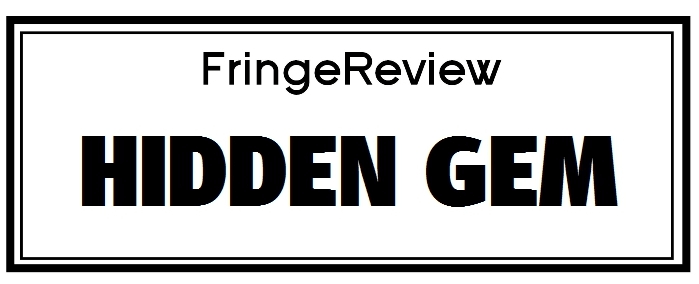Brighton Year-Round 2022
Buck Brass Trio
Buck Brass Trio

Genre: Live Music
Venue: All Saints, Hove
Festival: Brighton Year-Round
Low Down
Buck Brass Trio play works from Andrea Gabrieli, Brahms, Oskar Bohme Thomas Adams Steven Verhelst, Ivor Novello, Mozart and an arrangement of ‘Amazing Grace’ twice.
Review
Buck Brass Trio are a flexible group of brass players, who formed at the Royal Academy of Music in 2013, helmed by Richard Buck a trombone player, today with equally long-standing member Timothy Ellis a French horn player and Katie Lodge having more recently joined on trumpet.
All Saints is a perfect acoustic for brass, and today the trio let it blossom with the brass first off of Venetian St Marks-based Andrea Gabrieli (1533-85) uncle of the famous Giovanni. Those echo-effects and other techniques first essayed in this almost first brass composer are worked in beautifully if briefly in his ‘A Caso un Giorno’, a secular piece with layerings and overlappings.
Next is something really exotic from a composer who isn’t. Brahms born exactly 300 years later (he’s 1833-97) wrote his late organ Chorale Op 122/8 (of 11) ‘Es ist Ros Entsprungen’ at the end of his life in 1896. It’s known as transposed for brass in quintet form, and as a trio it’s equally effective as a hymn-like homage to Bach: a naturally lower-lying tessitura flowers perfectly away from its organ sonority.
Unusually next up we see a Prelude and Fugue lit differently. Oskar Böhme (1870-1938) is pretty well unknown, but was a trumpeter and the son of one too, born near Dresden. His Prelude No. 1 in C minor Op 28 from 1910 is attractive and actually written for a brass trio.
His end is tragic. Moving to St Petersberg in 1897, he played cornet at the Marinsky Theatre 24 years, then taught in Leningrad 1921-30. But he was exiled under the terror to Orenberg on the Ural, south-east of Moscow in 1936 for being German. He was said to have died in 1938, but was seen as late by 1941 according to others. His music though is being increasingly rediscovered.
The Fugue goes to a much earlier composer, English organist Thomas Adams (1785-1858) one of the most brilliant organists and improvisers of his time. The Fugue’s an attractive late Rococo piece with a nice classical jolt full of bell peals. It’s neatly executed on the lighter inflection of this flexible brass ensemble.
Steven Verhelst (born 1981) has written A Song For Japan in 2011 for the Fukushima nuclear disaster. It’s song-like too, indeed with built-in refrain elements it becomes hymn-like as well. It’s become popular: attractive, heartfelt and filmic in its textures, rather heartwarming.
Buck Brass involved themselves quite a bit during 2014-18 with the wartime centenary being commemorated. One result was the arrangement of Ivor Novello (1893-1951) – his wartime hit ‘Keep the Home Fires Burning’ which goes with the right sonority and sentiment.
As would have Nat Ayers (1887-1952) and his ‘If you were the only girl in the world’ but it was cut in favour of a brilliant swinging version of ‘Amazing Grace’ with a jazzy prelude and syncopations reconstructing the whole way we hear it. Played as an encore too we might have had both, but there’s no doubt it’s a quietly thrilling arrangement with its kicks of the familiar melody.
Mozart’s Divertimento in C K439b No. 4 for three Basset Horns inevitably fits really well with this trio, though it’s transposed up to C major.
An offshoot of domestic and masonic music-making, from around 1784 it starts with a perky Allegro, small thrusts of upbeat statements followed by more shaded adventure.
The Larghetto’s all song-like and rather simple lyricism, though underpinned by Mozart’s inherent complexities even here.
The Menuetto is like a contradance, all sallies and retreats, a pure minuet in fact. It has a contrasting equally brisk more lyrical trio section.
The Adagio is unusually placed and the longest movement at five minutes. The blent sonorities here open out the experience into some kind of thanksgiving, a fine contemplative ending. Again lyricism is to the fore, sustained by refrains and undercutting notes from the lowest of the trio, here the trombone.
The final Rondo Allegretto is again not just a simple Rondo, fast and detailed as it is, if also fleet, chirpy almost chipper in its opening call with the darker refrain.
Buck Brass Trio are rising stars, the repertoire fresh and invigorating, their ensemble playing flawless and their intros and chattiness personable and engaging, drawing everyone in. They want to be back. We want them back. This acoustic – one where Richard Buck also works in his church – clearly finds them at home, blossoming.


















































